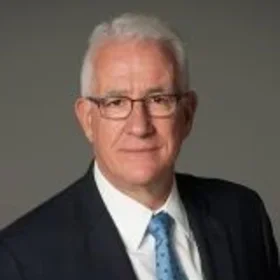By Sim Segal, Program Director and Senior Lecturer in Discipline, Enterprise Risk Management, Columbia University; President, SimErgy Consulting
Careers are far more fluid today than ever before. Employees can change employers, and even career tracks, more easily. Aside from monetary compensation, people typically make such changes in search of three things:
Important work: They seek work that enables them to make the biggest possible positive impact on their organization.
Interesting work: They are attracted to work that is challenging and intellectually stimulating.
Variety: They want to engage with different experiences throughout their career.
There is a career niche called enterprise risk management (ERM) that offers all three of these in a single position, without having to change employer or role. At least, this is true for the type of ERM that I practice, which is value-based ERM. This is a combination of value-based management and enterprise risk management.
Important Work
Value-based ERM informs decision-making at the highest levels. In this work, I build a dynamic strategic planning tool that produces a range of possible outcomes of the Plan. This vets the viability of the organization’s strategic plan. One of the key metrics produced is the likelihood of achieving the baseline Plan. This work also explores strategic and/or tactical decisions that will increase the likelihood of success. This is some of the most important work a company can engage in: validating and making course corrections to their strategic plan.
Through my consulting work, I’ve seen my clients—the ERM project sponsors—gain influence and impact in their organizations, getting pulled up into the most important decision-making tables. I brought this methodology to Columbia University (I am founder and director of their Master of Science in ERM) to make this type of career accessible more broadly to the market.
Interesting Work
This work could not be more interesting. By definition, it is always involved with identifying and managing the most important risks—both threats and opportunities. Risks, in this context, are sources of events that can cause deviations from the baseline strategic plan, either upside or downside. These are items that the board of directors and senior executives care about the most.
In addition, the work involves both technical abilities and communication skills. The technical work is in building quantitative models to project business results. The communication skills are needed for conducting interviews with senior executives and key subject matter experts. These discussions are interesting and challenging. Each conversation must be dynamically tailored, on-the-fly, to the specific individual and to what is being exchanged. During the interview, key information must be developed for input into the model and subtle training must be conveyed to advance the risk culture of the organization.
Variety
One of the most wonderful aspects of value-based ERM work is the variety. Even within a single organization, there is continual change in the work. Any change in the external or internal environments requires reflecting those changes in the ERM work. This involves reconnecting with individuals and also changes to the technical models. In addition, for those in consulting, each new client presents new aspects: what types of business, how to model them, what risks they have, etc. This is true even for different clients in a specific field, because each client has different strengths and weaknesses, product features, suppliers, aspects to how they operate, etc.
ERM consultants also get to apply their work at ever-changing types of organizations. I have been fortunate to have ERM clients in a variety of sectors, including: insurance; banking; credit cards; technology; consumer goods; biotechnology; telecommunications; hospitality; energy; services; timberland; education; non-profits; and government agencies.
If you, or someone you know, has that itch to make a change, I encourage you to explore a career in ERM. It may be the last change you need in your career.
About the Columbia ERM Program
The Master of Science in ERM program at Columbia University prepares graduates to inform better risk-reward decisions by providing a complete, robust, and integrated picture of both upside and downside volatility across an entire enterprise.
Fall 2025 application deadlines for the M.S. in ERM program are March 15, 2025 for applicants with international documents, and May 1, 2025 for the final deadline. Learn more here.



